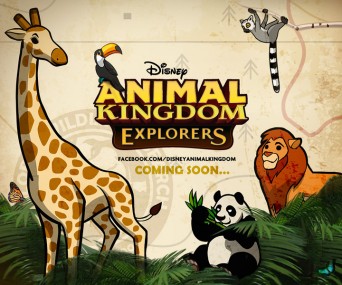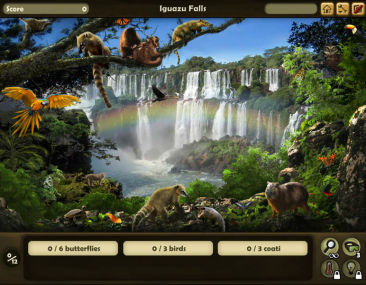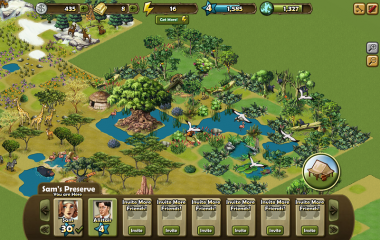Disney Hopes Brands Are the Best Protection Against Social Gaming Copycats
Disney’s next game on Facebook takes its inspiration from the company’s Animal Kingdom Park in Orlando, where 1,700 animals inhabit 500 acres.

And because of its strong association with a brand, the game makers are hoping that this time the game won’t be as easy to replicate by competitors — unlike what happened with Disney’s big hit Gardens of Time.
Animal Kingdom Explorers, which will launch over the next couple of weeks, challenges players to find a number of items within a scene. Butterflies and birds, for example, are hard to decipher among the lush vines of a jungle; leopards, crocodiles and elephants are camouflaged in the deserts of Africa.
The game is Disney’s second to fall under the category of “hidden objects,” a genre that Disney arguably helped define with the launch of Gardens of Time, which Facebook named as the most popular game of 2011.
 “After we launched Gardens of Time, we wanted to follow on that with something that would appeal to those who loved it and reinforce the elements that they loved the most,” said Eric Todd, the VP of product at Playdom and creative director of Animal Kingdom Explorers. “And what they said is that they really like learning.”
“After we launched Gardens of Time, we wanted to follow on that with something that would appeal to those who loved it and reinforce the elements that they loved the most,” said Eric Todd, the VP of product at Playdom and creative director of Animal Kingdom Explorers. “And what they said is that they really like learning.”
They also wanted a game that couldn’t be copied as easily by competitors, which frequently occurs in social gaming when a particular title or genre suddenly takes off.
For instance, the Gardens of Time game had a Victorian theme, with players traveling throughout multiple eras, learning about history as they went. After its success, many copycats followed, including Zynga’s Hidden Chronicles, which also had a Victorian look and feel. I pointed out the similarities between the two games after Zynga launched the game following its initial public offering.
But by partnering with one of Disney’s big brands, Todd is hopeful that this one will be more difficult to mimic.
 He said the Disney-owned Playdom team traveled to Orlando to meet with the engineers who created the Florida theme park, so that the game would be scientifically accurate and would be familiar to anyone who had visited the park. In all likelihood, equivalent resources wouldn’t be available to other game makers.
He said the Disney-owned Playdom team traveled to Orlando to meet with the engineers who created the Florida theme park, so that the game would be scientifically accurate and would be familiar to anyone who had visited the park. In all likelihood, equivalent resources wouldn’t be available to other game makers.
“Hidden object games are tremendously popular among a broad and very enthusiastic audience,” Todd said. “It’s flattering to the degree in which our previous game was intimated.”
Generally, if you’ve played the Gardens of Time, or many other social games — the mechanics of this new game will be familiar; it doesn’t stray too far from the commonly used playbook.
For instance, as part of the game, players will have a space — in this case, it’s a nature reserve — where they have to decorate and add animals and other items. Users will be able to visit each other’s reserves, much like visiting another user’s farm or city.
In addition, the game uses a common game mechanic to get users to cough up a few dollars for the free-to-play game. After playing for a certain period of time, a player will run out of energy. They can either wait to play some more, or pay to buy more energy.
Another advantage in leveraging a Disney brand is being able to tap into the company’s massive entertainment marketing engine. The game will be promoted on Disney’s Web sites and within the theme park itself. Likewise, the park will be promoted from inside the game. Also, because of the close tie-in with a Disney property, the developers are using the name Disney Social Games, rather than Playdom, which Disney bought in 2010 for more than $500 million.
Playdom plans to release a dozen games this year, several of which will finally leverage Disney’s big brand names. The first game built on Disney’s intellectual property — Marvel: Avengers Alliance — launched in January.








